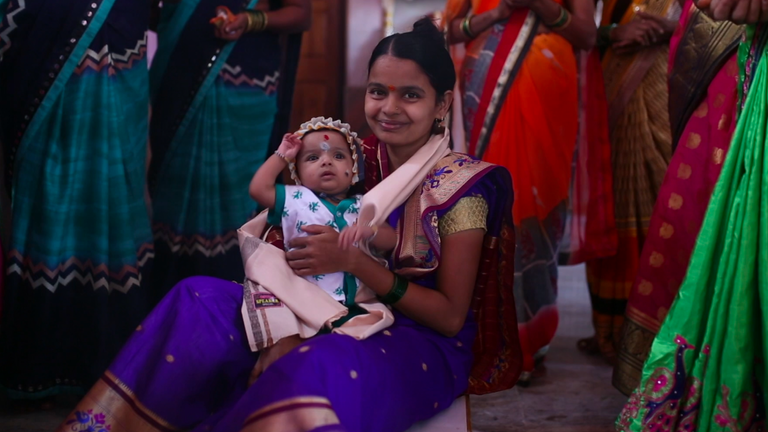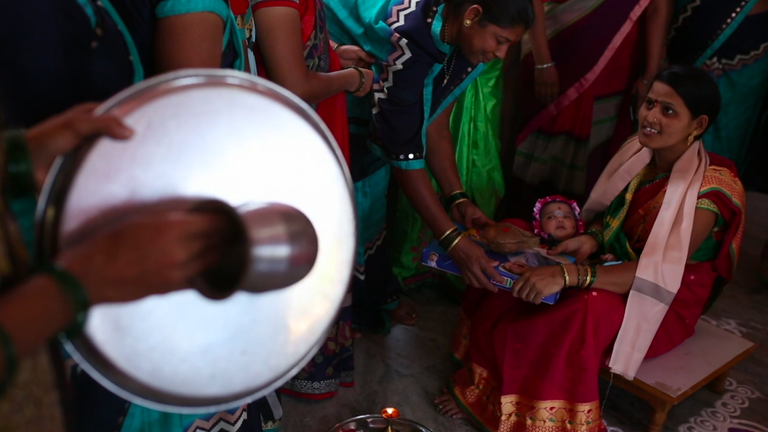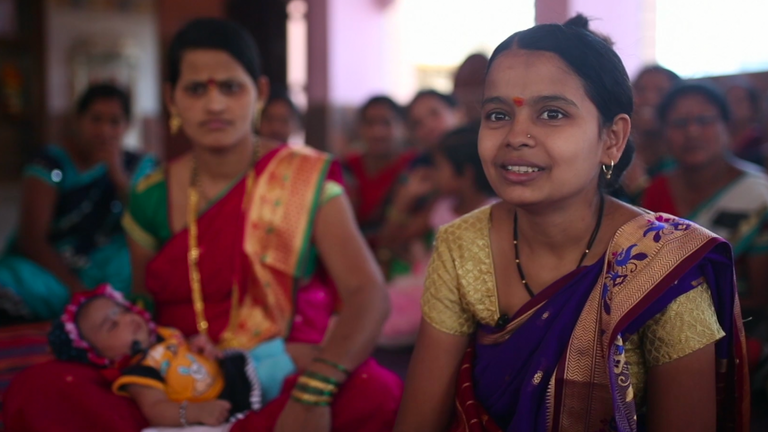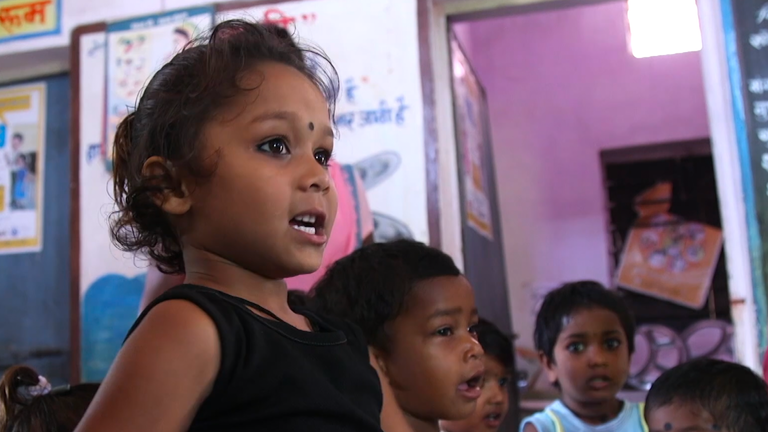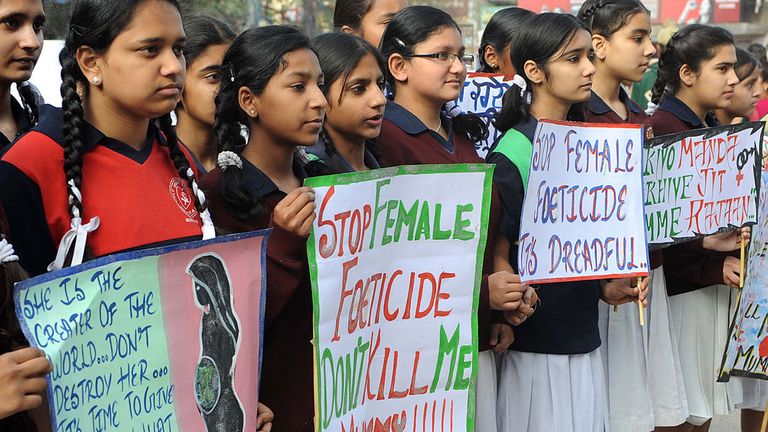Women encircle a mother and her newborn, singing and banging thalis (steel plates) to celebrate the naming of the child.
But what is extra special about this celebration is that the women are rejoicing the birth of a "girl child" as enthusiastically as they would for a boy.
In the village of Velgaon in rural Maharashtra, Project Tejaswini has brought about a revolutionary change.
Beaming mother Rupali Pandurand Pawar, 30, said: "I gave birth to a girl child. I was very happy and my family members are also very happy. They were not disappointed, so they did not harass me. In our village everyone celebrated the birth of my girl."
Women of the community offer sweets and gifts to Rupali. In earlier times, this kind of celebration was reserved only for boys.
The Tejaswini project, started in 2005, is funded by the UN's International Fund for Agricultural Development (IFAD) and the Indian government. It has empowered over a million women, giving them financial and cultural independence in this region.
A change in the mindset and economic conditions has seen a marked rise in the number of girls born in the area.
In 2005, there were just 867 girls for every 1,000 boys. Now it is 924 - higher than the national average of 919.
Shraddha Joshi, managing director of IFAD Women's Development Corporation, said: "Ceremonies like girl child celebrations are very important for us, they help us in many ways. One they prevent sex selected gender bias determination, sex-ratio increases, issues related to girls, we get positive respondents from those.
"Perception of the whole society changes, a girl was considered to be a burden until now. Now she becomes very celebrated."
Female foeticide has been a scourge on this nation. A girl born into a family is perceived to be a financial burden, unable to carry the family name and unavailable for her parents in their old age.
Prenatal sex determination and abortions were practiced widely, skewing the country's sex ratio to worrying proportions.
The government brought in strict legislation against the practice of gender selection under the Pre-Conception and Pre-Natal Diagnostic Techniques Act in 1994. Though the practice may not be as widespread now, it is still prevalent.
Data shows that the ratio is more skewed in urban than rural areas, as people are more affluent and have better access to medical facilities and neonatal tests.
In a report released earlier this year, the United Nations Population Fund (UNFPA) stated that India accounted for 45.8 million of the world's 142.6 million "missing females" over the past 50 years.
In the State of World Population 2020 report, "missing females" are defined as women missing from the population at given dates due to the cumulative effect of postnatal and prenatal sex selection.
While China accounted for 50%, India was second with 40% of that total number.
The report also stated that between 2013 and 2017, about 460,000 girls in India were missing at birth each year. While sex selection accounts for about two-thirds of the total missing girls, post-birth female mortality accounted for the remaining.
Despite efforts from the government to bring in legislation and several policy interventions to protect the "girl child", the child sex ratio at birth remains low.
Earlier this week, a mobile phone video showed a baby girl born a few hours earlier abandoned in a sack in the northern city of Meerut in Uttar Pradesh.
Left out in the cold, her cries were heard by passersby who found her stuffed in two plastic sacks. The baby was rushed to a children's hospital where she was treated for injuries and respiratory problems.
The police are now hunting for her parents.
November 25 is the International Day for the Elimination of Violence against Women. It is also the beginning of a 16-day campaign for the prevention and elimination of violence against women and girls across the globe.

